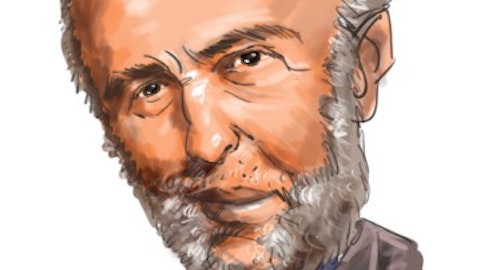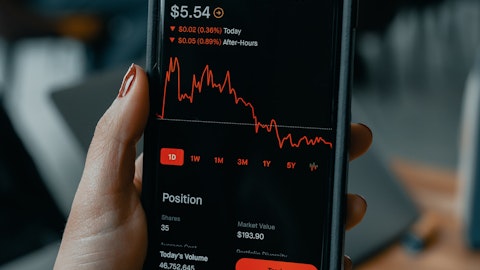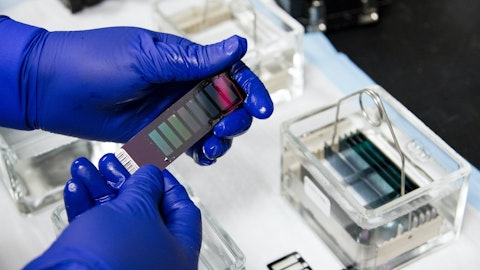In terms of the BET program, again, we know that pathway epigenetically is important in myelofibrosis. We see both spleen response as well as symptom responses. We also continue to dose escalate this year, particularly in combination with ruxolitinib. We’ll continue to push the BET dose from 6 milligrams to 8 milligrams to 10 milligrams. We know that the on-target toxicity with BET will be thrombocytopenia. It’s across the board with BET inhibitors. We’ve seen it with our own program, and that will be dose-limiting. The likely population there to go after the pivotal study, at least, to begin with because of that profile would be suboptimal responders. And just to note, that the competition is doing the first-line study at the moment. So the suboptimal population, we think, is wide open to go after.
And again, we’ll determine that towards the end of this year.
Operator: Your next question today is coming from Brian Abrahams from RBC.
Brian Abrahams : I was hoping you could unpack the Jakafi guidance a little bit more. It sounds like at the midpoint of your range, you may be expecting a little bit less contribution from both either demand growth or price growth, and it seems for our quick math that gross to net is going to be relatively stable there. So I was wondering if you could maybe talk a little bit more about some of the assumptions underlying that in terms of demand across different indications and net price that shapes this guidance and whether — if dynamics perhaps remain as they are today, we could potentially see upside to that?
Barry Flannelly : Brian, it’s Barry. So thanks for the question. Yes, I mean, as you know, that Jakafi is really the #1 treatment for myelofibrosis, the #1 treatment for polycythemia vera in the second-line setting and for GVHD in both the acute and chronic steroid-refractory setting. Jakafi is the #1 drug. But in terms of our guidance, the appropriateness is we think it’s perfectly appropriate for right now, given the fact that we’ll have actually a third competitor in the middle of the year for MF, there’s two competitors for GVHD now. If you remember last year, in terms of GVHD, we had bolus of growth in the fourth quarter of 2021 as patients transitioned from our expanded access program, about more than 300 of them transferred from our expanded access program to commercial drug.
So seeing that kind of growth again is not likely to happen this year, but we’ll continue to see the drug grow quarter-over-quarter, year-over-year in terms of new patients, total patients in MF, PV and GVHD. But again, the guidance at this point is appropriate.
Operator: Your next question is coming from Jessica Fye from JPMorgan.
Jessica Fye : Great. Looks like you hit the 50% exit rate on Opzelura gross-to-nets in the fourth quarter. Can you talk a little bit about how we should think about gross to nets in 2023 for that product and any quarter-to-quarter variability we should look out for?
Christiana Stamoulis : This is Christiana. So in terms of the gross to net in 2023, I think the 50% average rate for the year is a good working assumption. However, you will see variability during the — between quarters and expect the rate in Q1 to be above that 50% average rate and above the rate that you will see in other quarters. And that’s because, as I indicated, at the beginning of the year, you get the reset — plan to reset deductibles for patients. And as a result, there is more for us to cover, which increases further the gross to net rate.
Operator: Your next question is coming from Tazeen Ahmad from Bank of America.
Tazeen Ahmad : On Opzelura, will the split between vitiligo and AD influence what your gross to net will be for this year? And then secondly, longer term, do you expect any difference in compliance rates between patients on vitiligo versus AD?




